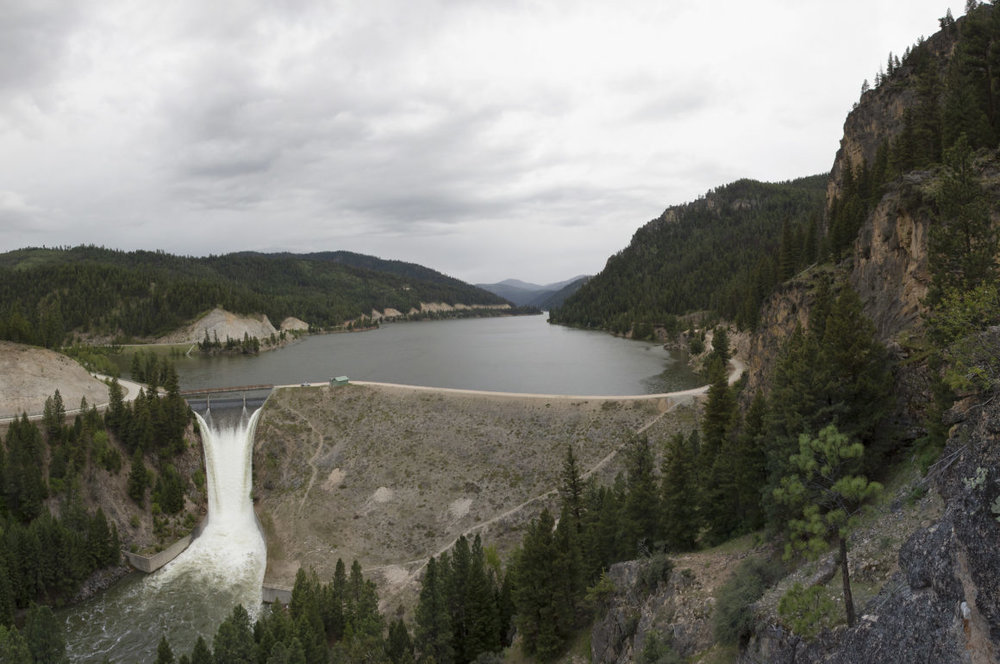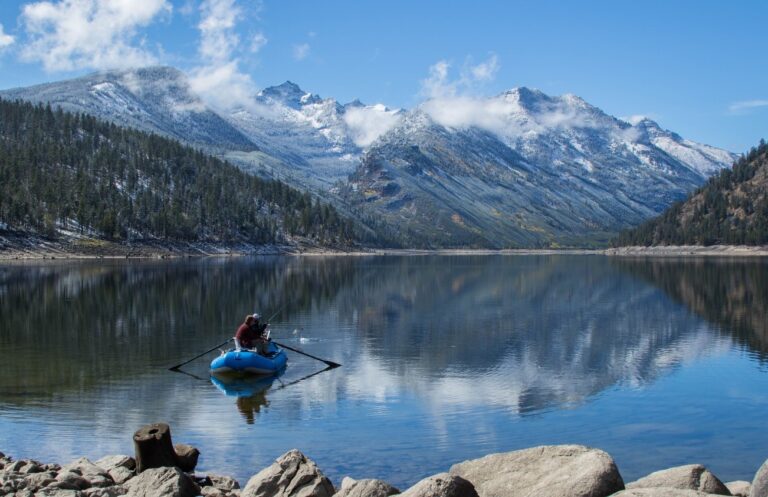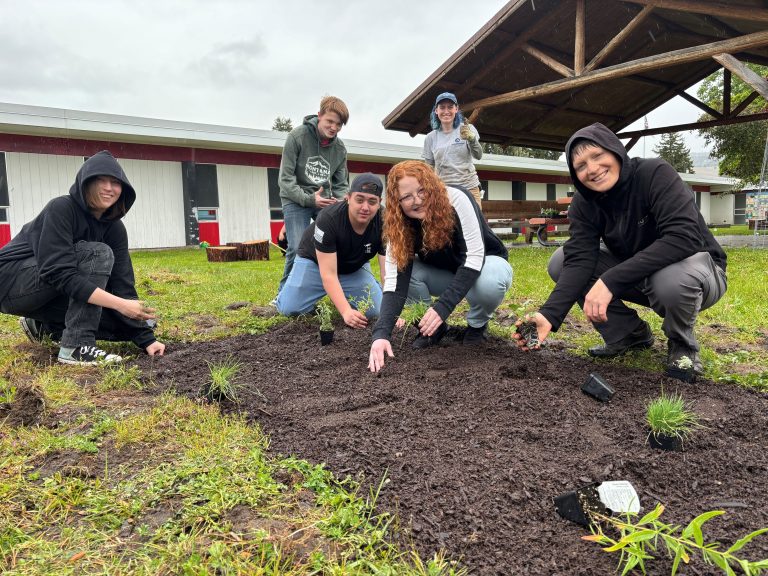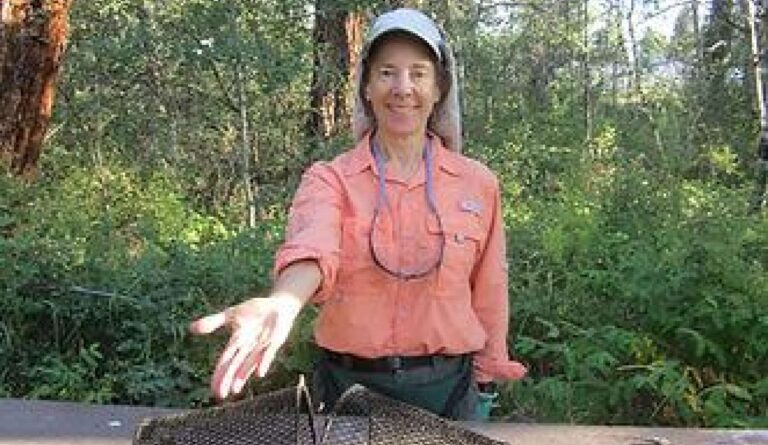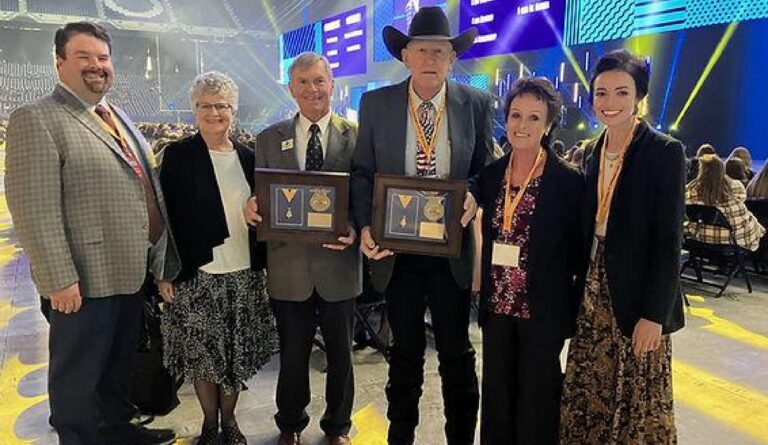The Time to Conserve Water is Now – Painted Rocks Water Supply Approaches Low Levels, Encouraging Extra Local Cooperation
Water Trends and This Year’s Low Projections
Each year our local irrigators, water managers, and Fish and Wildlife biologists work together to strategically release water from Painted Rocks Reservoir into the Bitterroot River to maintain flows that provide enough water for important irrigation operations while sustaining healthy levels for fish and other wildlife. Bell Crossing, a popular Bitterroot River access point, is the point at which they measure outcomes of their water output levels and, therefore, determine how much more ought to be released from the reservoir.
These local leaders aim to keep Bell Crossing flows at no less than 350-400 cubic feet per second (cfs). But, this year’s early warm temperatures, rain-on-snow events, and hot and dry forecast have led to low, subpar water conditions for both Painted Rocks Water Users and the Bitterroot River.
At a recent Painted Rocks Water Users Association meeting we learned this year promises to be hotter and even dryer than the last, with stream flows at only 30-50% of the normal range. With decades of experience in this meeting room, a realistic flow goal for Bell Crossing was set at 150-200 cfs. On Monday morning (7/17) Bell Crossing was at 407 cfs, and at this time last year 940 cfs, with the historical median at 781 cubic feet per second. Bell Crossing flow has not notably dropped below the 200 cfs level in 20 years.
With River and irrigation flows this concerningly low, it falls upon all and each of us – Valley residents – to conserve water to help our local farmers, anglers, neighbors, and fish and wildlife make it comfortably through this tough dry season.
Emphasizing the Importance of Community Conservation
With River flow conditions predicted to be down to half as much as last summer, Bitterroot River Commissioner JR Iman emphasizes that the time to start conserving water is now. Hot and dry years like this are hard for everyone, and it’ll be only by collective, community water conservation that some of our most cherished and valuable operations – like fishing and ranching – are able to comfortably continue.
Fortunately, this is not the first time in Bitterroot, Montana, nor global history that limited water conditions have proven the strength of community cooperation. We know and trust that when everyone tries just a little harder to use just a little less water, that we can all come out successfully on the other side of this pinch.
Who gets water from Painted Rocks Reservoir?
Painted Rocks Reservoir is owned by Montana Department of Natural Resources and Conservation (DNRC) and stores approximately 32,362 acre-ft (ac-ft) of water to be strategically released throughout the summer season, extending the irrigation season for local producers and supplementing flow in the River for wildlife and recreationists. Of this total, 15,000 acre feet (~60%) are designated for Montana Fish, Wildlife, and Parks and 10,000 acre (~40%) feet for the Painted Rocks Water Users Assocation – local people who use the water primarily agricultural purposes.
Montana FWP can request release of their water shares at any time, and strategically call for water to be released from the reservoir during the warmer, dry months to keep the river flowing at levels adequate for the fish and wildlife who required cool, plentiful waters.
Why measure flows at Bell Crossing?
Bell Crossing sits along a section of the Bitterroot River where flows are generally at their lowest, so measuring flows here can help water managers keep an eye on a minimum threshold for a much larger stretch of river that they supplement with water from Painted Rocks Reservoir.
The river section above Bell Crossing (south of Bell Crossing outside of Victor up to the Bitterroot River headwaters on the West Fork) is a ‘losing section’, meaning that flows continually decrease along this section, reaching a low at Bell Crossing. The river section below Bell Crossing (north toward Missoula) is a ‘gaining section’, meaning that flows generally increase from this point. Agricultural producers situated near or around this lower section of the river are able to return portions of their irrigation water to the River, allowing this section to maintain more water than others.
What is the Painted Rocks Water Users Association?
The Painted Rocks Water Users Association is a group of producers and irrigators who have rights to the 10,000 acre-feet of Painted Rocks water released each year. These responsible operators meet regularly to discuss water conditions and forecasts and strategize as a community to optimize water conservation and production success.
Questions?
Bitterroot River Commissioner, JR Iman
406-961-3769, calljriman@yahoo.com
DNRC, Civil Engineering Specialist, Larry Schock
406-542-5899, lschock@mt.gov
PRWUA Vice President, Roger Raynal
406-961-5396, tcr@chsmgt.com

